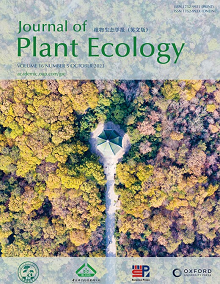Current Issue
-
 Volume 16 Issue 5
Volume 16 Issue 5
Drone photo of a typical northern subtropical forest located in Spirit Valley, Purple Mountain, Nanjing, China. The photo clearly illustrates that the needle-leaved (grayish) is being replaced by the deciduous trees (light yellow-green), a slow process of secondary succession that has been lasting for decades. This process was foreseen by Chung-Hsiang Chu (AKA Kwei-Ling Chu, 曲仲湘), a founding father of China’s modern ecology. Back in the 1950s, Chu studied the forest’s composition and structure based on belt transects. This is a pioneering research of quantitative vegetation ecology in China. Since then his field transects have been well recorded, and revisited in the 1980s, 1990s, 2000s, and 2010s by four generations of ecologists. In this paper, using this valuable historical dataset, Rao and colleagues combined information of functional traits and community phylogeny to gain new insights into how long-term forest succession is shaped by local extinction and colonization of species. Photo credit: Xin-Yu Miao. See Rao et al. in this issue.
IF: 3.9
CiteScore: 5.7
CiteScore: 5.7
Editors-in-Chief
Yuanhe Yang
Bernhard Schmid
Yuanhe Yang
Bernhard Schmid
CN 10-1172/Q
ISSN 1752-9921(print)
ISSN 1752-993X(online)
ISSN 1752-9921(print)
ISSN 1752-993X(online)







